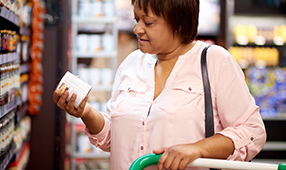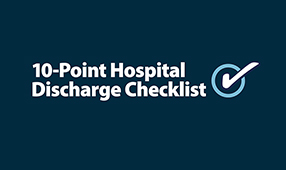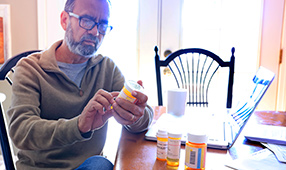Traveling with food allergies, which can be life-threatening, or food sensitivities, their milder counterparts, can be a real challenge. Watching what you eat and drink—along with being conscious of what others are eating and drinking around you—can strip the fun right out of your vacation. And the last thing you want on vacation is a trip to the ER!
While there are more than 170 different foods that are known to cause allergic reactions, the 8 most common are peanuts, tree nuts, milk, eggs, soy, wheat, fish and shellfish, says Lynn Huen, national director of education initiatives at FARE (Food Allergy Research and Education), the nation’s leading nonprofit organization working on behalf of the 15 million Americans with food allergies.
And these happen to be rather difficult foods to avoid, especially in unfamiliar surroundings where you can’t prepare your own meals.
Although Huen says the only way to prevent allergic reaction is strict avoidance of the problem food(s), there are steps you can take to reduce your risk and minimize problems.
Try these tips to make your getaway a safer one.
Be aware of cultural differences
Allergies have increased significantly in the past few decades, especially in the industrialized world, so many people in the U.S. know exactly how dangerous food allergies can be. That’s especially true of educators who are frequently confronted with food allergy issues in the classroom, says Christopher Chang, M.D., an allergist and spokesperson for the American College of Allergy, Asthma and Immunology. Chang is also an associate director of the UC Davis Allergy and Immunology Fellowship Program in Sacramento, California.
But in other countries, food allergies may not be as prevalent. They also may not be as well-recognized or as well-accepted by the public, so travelers need to take special precautions. “Things may be different when you’re traveling compared to when you’re at home. You have to be a little bit more vigilant and be very well prepared,” adds Chang.
For example, “peanut allergy is probably the most significant food allergy that causes anaphylaxis”—a severe and potentially deadly allergic reaction—but despite a number of high-profile peanut-allergy deaths, “some air carriers still serve peanuts,” Chang says.
Carry baby wipes
Whether you’re traveling with babies or not, bring along baby wipes and use them to wipe down surfaces that could have come in contact with foods you need to avoid.
“With most foods, you really have to ingest them in order to have an allergic reaction,” Chang says. His family is very cautious about peanut allergy, but even if a previous passenger has left peanut butter on the table, what they’ve learned is if you clean it well with baby wipes, it should be okay.
Bring your medicines
Be prepared before you go, says Chang. “When you travel with food allergies,”make sure you bring the right medications with you and keep them accessible.
On planes: Always carry your medication in your carry-on bag, where you can get it if you need it urgently. Never pack it in your check-in luggage. And don’t put medicines in a roller carryon bag, Chang cautions. Even if the roller qualifies as carry-on luggage, on some flights it may have to be checked if there’s no overhead space or the plane is too small.
Keep your emergency epinephrine auto-injector (like EpiPen) with you at all times. It is allowed on board aircraft even though it contains a needle, but Chang recommends bringing the prescription for it along in case the device is challenged. (That happened to Chang’s family once while they were traveling in the U.S.)
On ships: If you’re going to be at sea, make sure you have the right medicines with you. Cruise ships are generally very well equipped, but Chang cautions they may not have what you need—so make sure you do.
Bring extra copies of your prescriptions
In addition to your medicine, bring additional written prescriptions so you can get them filled at a local drugstore if you need them. And make sure your doctor will be available if you need to have a prescription phoned or faxed in while you’re traveling.
“It always helps to have a prescription [for] the medicines you’re traveling with, especially if you’re traveling internationally,” notes Chang. A trick he likes: Use your smartphone to take pictures of your prescriptions. Put them in a file on your phone with backup pictures of all your important documents. For example, Chang takes a picture of the first page of his passport. If his passport is ever lost, he can show the Embassy the picture on his phone.
Check allergy policies before you go
Research every part of your trip, from the airline to the hotel to any restaurants that you can line up ahead of time.
Air travel: Find out what the airline’s allergy policies are before you book a flight. For example, do they usually serve foods you’re allergic to, such as peanuts? Look on their website or use the search box to find words such as “allergies” or “peanuts.”
When you’re ready to book a flight, inform the airline of your allergy. Tell the booking agent and gate agents you have a food allergy, explain what you’re allergic to, and ask them to share the information with other crew members.
Hotels. Consider staying in a room with a kitchenette or that has a refrigerator and microwave so you can store and prepare allergy safe meals. “It’s a good idea to travel with nonperishable foods” that you can eat safely if your dining options are limited, Huen says.
When you book your room, inform the hotel staff that a member of your party has a food allergy and ask them to do a very thorough cleaning of your room to prevent any accidental contact with allergens left by previous guests.
Restaurants. “Having safe dining options can be really tricky when you’re on the road and not familiar with the restaurants you’re going to be near,” says Huen. Check online to see if a restaurant’s allergy policy is posted on their website or call ahead and ask if the restaurant will be able to accommodate your food allergies or sensitivities.
When you’re dining out, always ask what’s in the food, how it was prepared and whether the same equipment was used to prepare a food you’re allergic to, Chang advises. “I have family members who have food allergies and we always have to ask when we go to a restaurant,” he says. Does the dish contain peanuts? Does the kitchen use peanut oil? Have they used any peanut butters or cooked peanuts in the same equipment used to make this dish?
FARE has several restaurant resources for people with food allergies including downloadable Food Allergy Alert Chef Cards available in many languages to print and hand to your server to make sure the restaurant understands your allergy needs.
Learn more about traveling with food allergies and check out the Road Trip Checklist for Food Allergies infographic on FARE’s mobile-optimized website.
“Advance planning and communication” are the two most important safety steps you can take when you’re planning to travel with food allergies, adds Huen.












